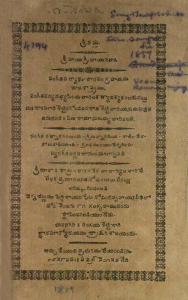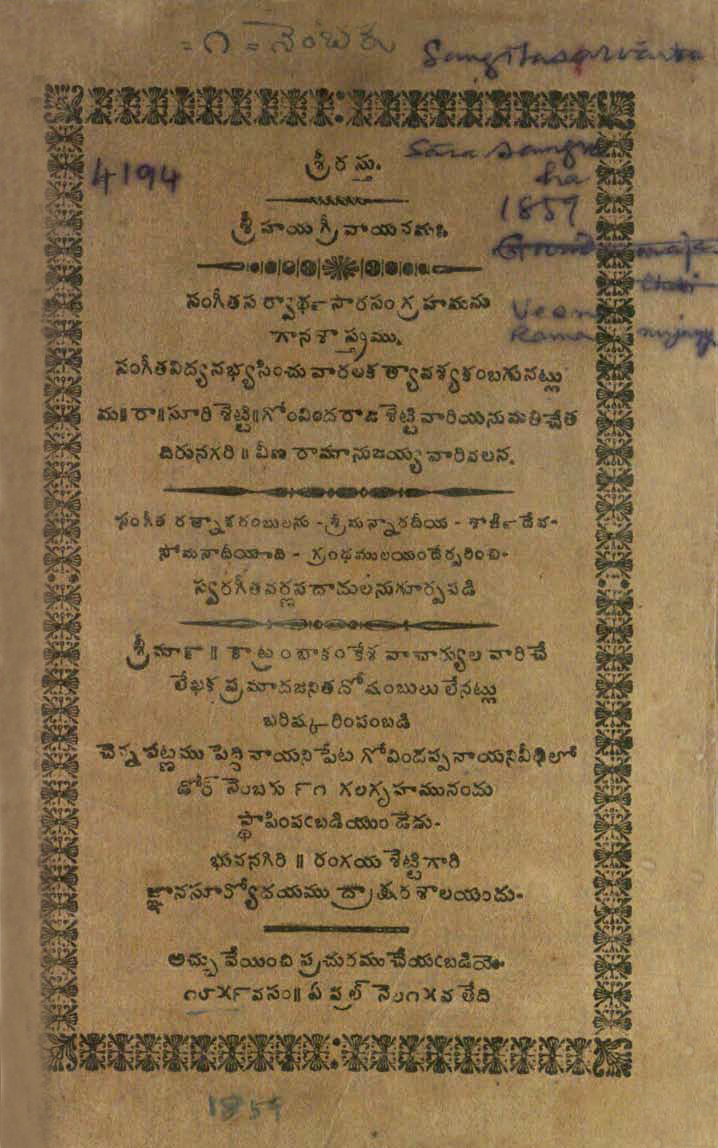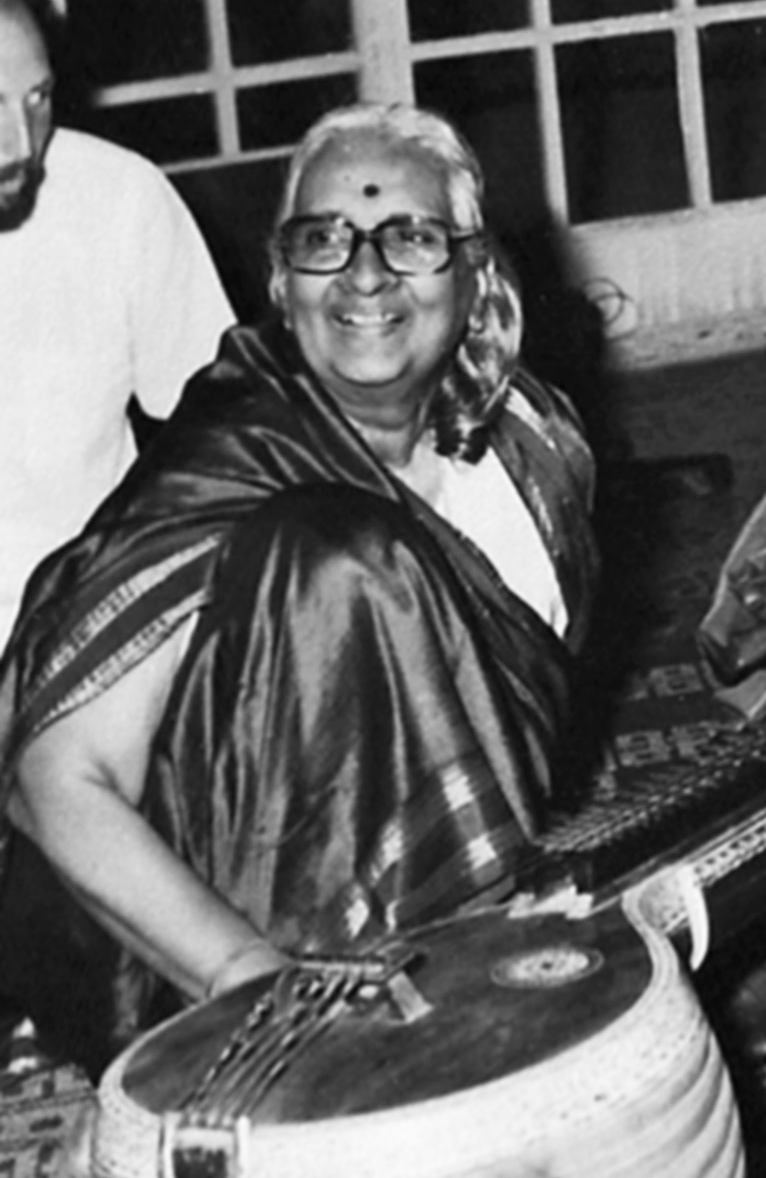

1859 edition
The Sangita Sarvartha Sara Sangrahamu (SSSS) is one of the earliest music books printed and published in Madras. It predates Subbarama Dikshitar’s Sangita Sampradaya Pradarsini by 45 years. The book Sangita Sarvartha Sara Sangrahamu, written in Telugu, by Veena Ramanujayya, was first published in 1859 — a copy (laminated for preservation) of this first edition is available in the Music Academy library (see cover page). Musician Savithri Rajan and Michael Nixon presented a lecture demonstration at the Music Academy, and wrote an article in English about the Sangita Sarvartha Sara Sangrahamu in Volume 52 (LII) of the Journal of the Music Academy in 1981, which we bring to you here (as a pdf attachment). In the attached article, gleaned from the archives of the Music Academy, they have mentioned that three editions of the SSSS were published in Madras — in 1859, 1885 and 1908 , but the second and third editions were published by different sets of people. There is also a copy of an 1897 edition (not mentioned in the article) in the Music Academy library which was printed at Sriranga Vilasa Mudraksharashala; this edition seems to have been scrutinised by Tachur Singaracharyulu and Alaga Singaracharyulu.
Savithri and Nixon have given an interesting analysis about the introduction, the sections, the contents and personalities mentioned in the book. It is stated in the title page that SSSS will prove most useful for students of sangita as it has a collection of svara, gita, varnam, and padam compiled from various sources. They further mention that “the unique feature of the book is the presentation of svaravali, datu and janta exercises and alankaras with sahitya of a very high order.” It is evident that Veena Ramanujayya (who wrote in Telugu and Sanskrit) wanted to simultaneously initiate the beginner into svara, purana (scripture) and sahitya (literature).
Nowadays, with a lot of emphasis on making the learning process more interesting and fun for youngsters, the abhyasa gana exercises prevalent in those times could be included by music teachers. The following example of the teaching aid as given by Savithri and Nixon adds a novel dimension to the exercises. The Eka tala exercise is presented in two varieties, one of which has attractive sahitya full of rhyme:
S R G (ni nu ma) — R G M (na nu ma) — G M P (vanu ma) — M P D (vinuma) — P D N (kanuma) — D N S (nanuma)
S N D (tanuma) — N D P (tsanuma) — D P M (dhanama) — P M G (ghanama) — M G R (dhanama) — G R S (yanima)
You can even find a series with the solkattu (mridanga syllables)! Youngsters will surely enjoy rendering such exercises.
In an article titled ‘Abhyasagana — A Study’, in the Music Academy Publication ‘Prathamabhyasa Pustakamu’ (available for sale), Dr. Meenakshi (Sumathi) Krishnan mentions that “The SSSS devotes an entire section to the early varisais. Ramanujayya gave a lot of attention to detail in the teaching of music. It is interesting that there is sahitya for the different varisais for ease of learning, for beginners. The sahitya differs based on the speed of the tala using short syllables for higher speed and longer syllables for the first speed. In sarali varisais, the arohana sahitya is on Sri Rama and the avarohana on Sri Krishna. Almost like nursery rhymes, the janta varisais have all the avataras of Vishnu depicted in the sahitya, starting from matsyavatara.” There are also a variety of datu varisais which are like tongue twisters, which even a seasoned musician may find difficult to sing without practice. It is interesting to note that the alankaras are prefaced by a dhyana sloka for each tala and the lakshana of the tala is mentioned in the sahitya of the alankara.
On 26 December 2008, Rajshri Ramakrishna of the Madras University, presented a lecdem on Abhyasa Gana exercises in the Sangita Sarvartha Sara Sangrahamu. Sriram V, one of the secretaries of the Music Academy, has given a short account of the lecdem in his blog on Madras Heritage and Carnatic Music.

Savithri Rajan
In the Epilogue of the attached article on SSSS, Savithri Rajan has mentioned that their family had the privilege of learning from great gurus like Sangita Kalanidhi Tiger Varadachariar and Veena Dhanammal. Savithri (b. 1908), was the daughter of musician Kanakammal and Dr. T. (Thoppur) Seethapathy Aiyar. Married to N. Sundara Rajan, she brought out a book titled ‘Sobhillu Saptasvara’. Edited and compiled by her with her student Michael Nixon, it has svaravali, some rare geetams, prabandhams, and suladis too. This book which is available in the Music Academy library, has a preface by Sangita Kalanidhi Dr. S. Ramanathan and a foreword by T. Sankaran. A well known vainika, Savithri was involved in establishing the organisation called Sampradaya in Chennai to document music and musicians, and she released an LP dedicated to her guru Veena Dhanammal with the intention “to regain the lost dhanam”. It was vidwan Tiger Varadachariar who drew the attention of her mother Kanakammal to the book Sangita Sarvartha Sara Sangrahamu. She was so fascinated by the beautiful sahitya for the abhyasa exercises that Kanakammal started teaching it to youngsters several decades ago. Savithri even recalls that her mother spoke about the unique sahitya at the Music Academy sometime in the 1940s. For her part, Savithri Rajan too had been teaching the preliminary exercises to her students.
In conclusion, the writers state that they stand in reverential awe of the wide range of nada vidya that has been conveyed in the Sangita Sarvartha Sara Sangrahamu. It is ‘Sara’ and ‘Sangraha’ — the essence and the abridged; truly a treasure. <<>>
S. JANAKI